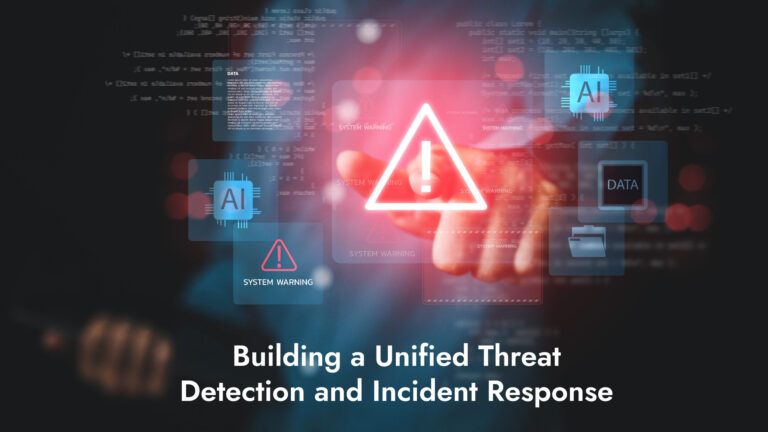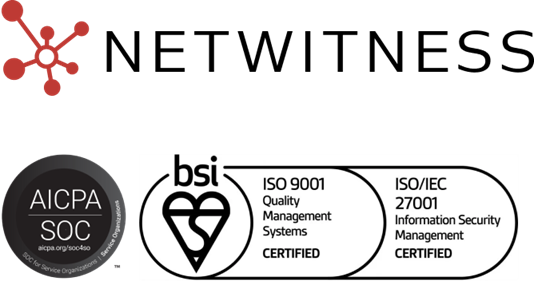What is Insider Threat Mitigation?
Insider Threat Mitigation encompasses the comprehensive strategies, technologies, and processes organizations implement to prevent, detect, and respond to security risks posed by employees, contractors, vendors, and trusted partners with authorized access to systems and data. These insider threats in cyber security range from malicious insiders deliberately stealing intellectual property or sabotaging systems to negligent users inadvertently causing security incidents through careless actions like falling victim to phishing attacks or mishandling sensitive information.
Implementing effective insider threat solutions through behavioral monitoring, access controls, security awareness training, and comprehensive insider threat programs enables organizations to reduce insider risk while balancing security needs with employee privacy and maintaining productive work environments.
Synonyms
- Insider Threat Prevention
- Insider Threat Protection
- Insider Threat Detection
- Insider Threat Defense
- Insider Threat Security
- Mitigating Insider Threats
- Insider Threat Management
- Insider Risk Management (IRM)
Why Insider Threat Mitigation Matters
Insider security threats represent uniquely dangerous risks because insiders possess legitimate access credentials, understand internal security controls, and can blend malicious activities with normal work behaviors.
Key reasons why insider threat mitigation strategies are critical:
- Privileged Access Exploitation: Insiders already have authorized system access and knowledge of where valuable data resides, allowing them to bypass perimeter defenses that stop external attackers and exfiltrate information without triggering traditional security alerts.
- Detection Complexity: Distinguishing malicious insider activities from legitimate work proves extremely challenging since insiders understand normal business processes, can time their actions during expected work periods, and know which security controls to avoid.
- Severe Financial Impact: Insider incidents cost organizations millions through intellectual property theft, fraud, operational sabotage, customer data breaches, regulatory fines, and remediation expenses that often exceed damages from external attacks.
- Organizational Vulnerability: Former employees seeking revenge, current staff facing financial pressures, or individuals coerced by external threat actors can exploit their intimate knowledge of systems and data locations for maximum damage.
Organizations without structured insider threat management face prolonged undetected data exfiltration, devastating impacts from trusted individuals exploiting their positions, and increased difficulty prosecuting insider incidents due to lack of evidence from inadequate monitoring.
How Insider Threat Mitigation Works
Effective insider threat prevention follows multi-layered approaches combining people, processes, and technology:
- Risk Assessment and Profiling: Identifying high-risk roles with access to sensitive data or critical systems, evaluating business processes vulnerable to insider abuse, and understanding motivations including financial difficulties, workplace grievances, or ideological factors that could drive malicious behavior.
- Security Awareness and Culture: Providing comprehensive cybersecurity training teaching employees to recognize common threats like phishing and social engineering, establishing clear acceptable use policies for systems and data, and fostering environments where reporting suspicious colleague behaviors is encouraged and protected.
- Behavioral Monitoring and Analytics: Deploying user and entity behavior analytics (UEBA) tools that establish baseline activity patterns for each user, then flag anomalous behaviors such as accessing unusual data volumes, working odd hours, using new unapproved devices, or requesting access to systems outside their job requirements.
- Access Control Enforcement: Implementing least privilege principles ensuring users receive only minimum permissions necessary for their roles, conducting regular access reviews removing unnecessary privileges that accumulate over time, and applying just-in-time access provisioning for temporary elevated permissions.
- Data Loss Prevention: Using DLP technologies that monitor and control data movement across endpoints, networks, and cloud applications, blocking unauthorized transfers to personal email or external devices, and applying data classification policies restricting how sensitive information is handled.
- Continuous Monitoring and Investigation: Maintaining comprehensive audit logs tracking user activities across all systems, correlating events to identify suspicious patterns like unusual login times or abnormal data access, and establishing clear investigation procedures when indicators suggest potential insider threats.
- Offboarding Procedures: Implementing strict processes to immediately terminate accounts and revoke access when employees leave the organization, informing teams not to reactivate former employee accounts regardless of requests, and monitoring for attempts by departed staff to maintain unauthorized access.
Types of Insider Threats
- Malicious Insiders: Current or former employees deliberately misusing their access to steal intellectual property for personal gain, commit fraud, sabotage systems for revenge after perceived unfair treatment, or sell sensitive information to competitors or criminal organizations.
- Negligent Insiders: Well-intentioned users who inadvertently cause security incidents through careless actions like falling victim to social engineering attacks, using weak passwords, installing unapproved software, discussing sensitive matters in public places, or ignoring security update notifications.
- Compromised Insiders: Legitimate users whose credentials have been stolen by external attackers through phishing or malware, who then impersonate them to access systems while malicious activities appear as authorized insider actions.
- Third-Party Insiders: Contractors, vendors, freelancers, and business partners with temporary or ongoing system access who may lack comprehensive security training, feel less invested in organizational success, or believe their actions as non-employees will go undetected.
Best Practices for Insider Threat Mitigation
- Establish Comprehensive Insider Threat Programs: Form cross-functional teams including security, HR, legal, and management that define policies, coordinate investigations, balance monitoring with employee privacy rights, and ensure insider threat detection complies with employment laws and regulations.
- Implement Layered Monitoring: Deploy insider threat mitigation solutions combining UEBA, DLP, privileged access management, and security analytics that correlate indicators across multiple data sources without creating overwhelming false positives desensitizing security teams to legitimate threats.
- Focus on High-Risk Indicators: Concentrate enhanced monitoring on employees facing termination or recent performance issues, users with financial difficulties, activities involving unusual data volumes or occurring during non-business hours, and access requests for systems outside normal job responsibilities.
- Apply Risk-Based Access Controls: Grant permissions based on job requirements following least privilege principles, implement separation of duties for sensitive operations preventing any single person from completing fraudulent transactions, and conduct regular access recertification removing accumulated unnecessary privileges.
- Create Security-Conscious Culture: Develop awareness programs teaching employees about insider risks and their role protecting organizational assets, incentivize security adherence through recognition programs, and establish clear reporting channels where staff can raise concerns without fear of retaliation.
- Maintain Strong IT Hygiene: Regularly back up critical data ensuring business continuity after incidents, keep all systems and software updated closing vulnerabilities insiders might exploit, and limit data access to only what employees need for their specific roles.
- Prioritize Employee Satisfaction: Foster positive work environments through regular performance reviews and one-on-one meetings, establish clear channels for raising workplace concerns, encourage healthy work-life balance, and create fair, equitable conditions reducing motivations for revenge-driven malicious actions.
Related Terms & Synonyms
- Insider Risk Management (IRM): Comprehensive discipline addressing all aspects of identifying, assessing, and mitigating risks from individuals with authorized organizational access.
- Insider Threat Management: Ongoing processes and programs for detecting, investigating, and responding to security risks posed by employees and trusted partners.
- Insider Threat Prevention: Proactive strategies and controls designed to stop insider incidents before they occur through access restrictions, security awareness, and behavioral monitoring.
- Insider Threat Protection: Technologies and measures safeguarding systems and data against malicious or negligent actions by authorized users.
- Insider Threat Detection: Capabilities and tools identifying suspicious insider activities through behavioral analysis, anomaly detection, and continuous activity monitoring.
- Insider Threat Security: Comprehensive security posture encompassing policies, technologies, and processes protecting against insider-originated risks.
- Insider Threat Defense: Strategic and tactical measures organizations deploy to defend critical assets against exploitation by insiders.
- Mitigating Insider Threats: Active processes of reducing insider risk through controls, monitoring, investigation procedures, and coordinated response efforts.
People Also Ask
1. What is an insider threat cyber awareness?
Insider threat cyber awareness refers to educating employees about security risks from trusted insiders, teaching them to recognize warning signs of malicious or compromised colleagues such as unusual access requests or odd working hours, and fostering cultures where reporting suspicious behaviors is encouraged and protected.
2. What is the goal of an insider threat program?
The goal of an insider threat program is to detect, prevent, and respond to security risks from employees and trusted partners through coordinated efforts combining monitoring technologies, policy enforcement, behavioral analysis, and cross-functional collaboration between security, HR, and legal teams while respecting employee privacy and maintaining workplace trust.
3. What is an insider threat?
An insider threat is a security risk originating from individuals with authorized access to organizational systems, data, or facilities, including current or former employees, contractors, vendors, and partners who can cause harm intentionally through malicious actions or unintentionally through negligence and careless behaviors.
4. What are two types of insider threats?
The two main types of insider threats are Malicious insiders who deliberately misuse their access to steal data, commit fraud, or sabotage systems for revenge or financial gain, and Negligent insiders who inadvertently create security risks through careless actions like falling victim to phishing or mishandling sensitive information.
5. What are the types of insider threats?
Types of insider threats include: malicious insiders deliberately causing harm, negligent insiders inadvertently creating risks through carelessness, compromised insiders whose credentials have been stolen by external attackers, and third-party insiders such as contractors and vendors with temporary access who may lack comprehensive security training.




